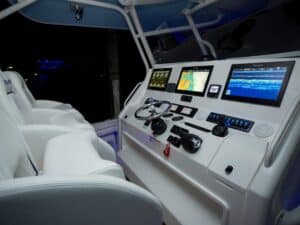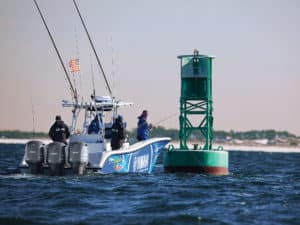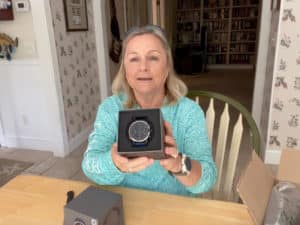
When Humminbird introduced side-imaging sonar for recreational boats more than 10 years ago, no one knew where the technology could take us. Today’s imaging, or scanning, sonar, available from a half-dozen electronics brands, can ping to the side, downward or literally all around the boat with photolike quality.
The technology expansion drove prices down, too. Imaging sonar now comes on units that cost as little as $150.
But just how does imaging sonar work? Why is it monochromatic? And can it help an angler find fish?
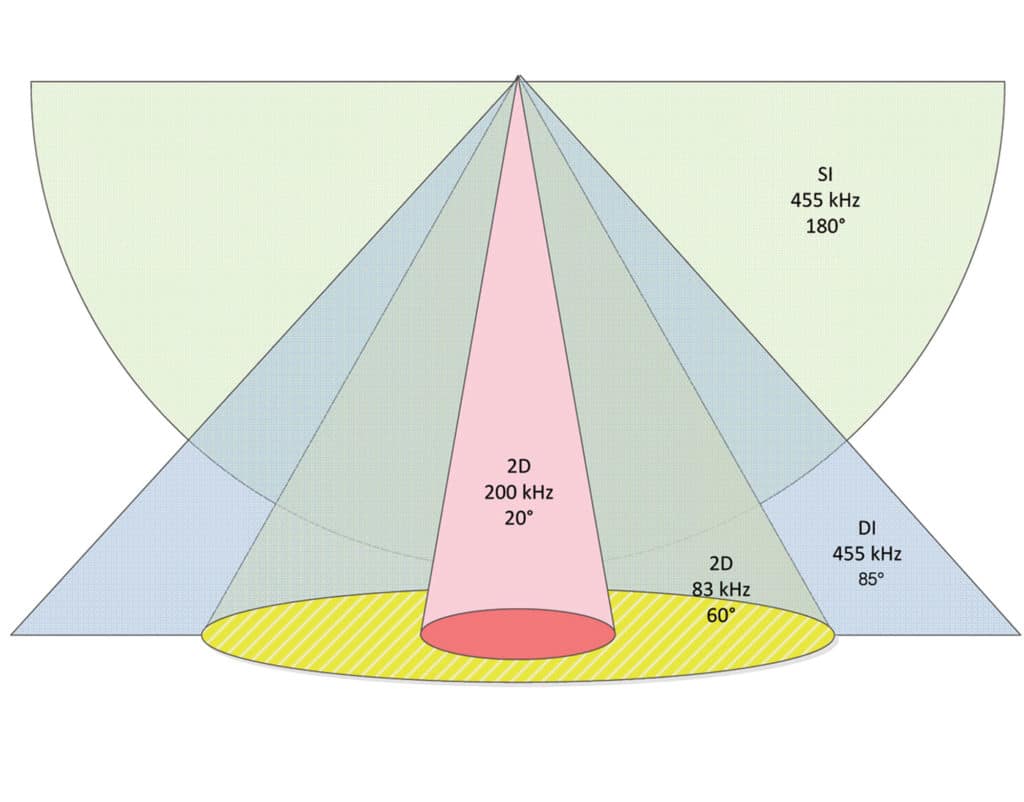
Simple but Different
Most anglers understand how traditional sonar works. A transducer — mounted on the transom, in the hull or through the hull — emits sound waves using one or more ceramic elements that are usually round in shape. Some elements send and receive sound; some only send or only receive. Their placement and angle within the transducer housing also affect how they operate.
The transducer sends out sound at a specified frequency that radiates toward the ocean bottom in a cone shape — narrow at the top and wide at the bottom, like a flashlight beam. Any fish or structure that passes within that sound circle displays on a monitor at the boat’s console — after rapid algorithmic equations turn the data into understandable marks, of course.
Those marks, which show as yellow or red blobs or arches, usually against a white or blue background, help anglers know that fish swim nearby. Yet just where those fish are located within the beam remains unknown; there’s no easy way to represent the 3-D underwater world on a 2-D LCD screen.
Imaging sonar likewise employs a transducer with one or more ceramic elements. But the elements are bar-shaped or even cylindrical. As a result, they emit a fan-shaped beam that is thin side to side, but whose angle widens as it travels, like a slice of pizza from tip to crust.
Traditional sonar usually pings at 50 or 200 kHz frequencies. Imaging sonar employs higher frequencies of 455 or 800 kHz. Raymarine‘s imaging technology CHIRPs through a range of frequencies from 320 to 380 kHz, and select Garmin products CHIRP from 425 to 485 kHz and 790 to 850 kHz. Higher frequencies result in higher-definition returns — hence the picturelike quality of the display.
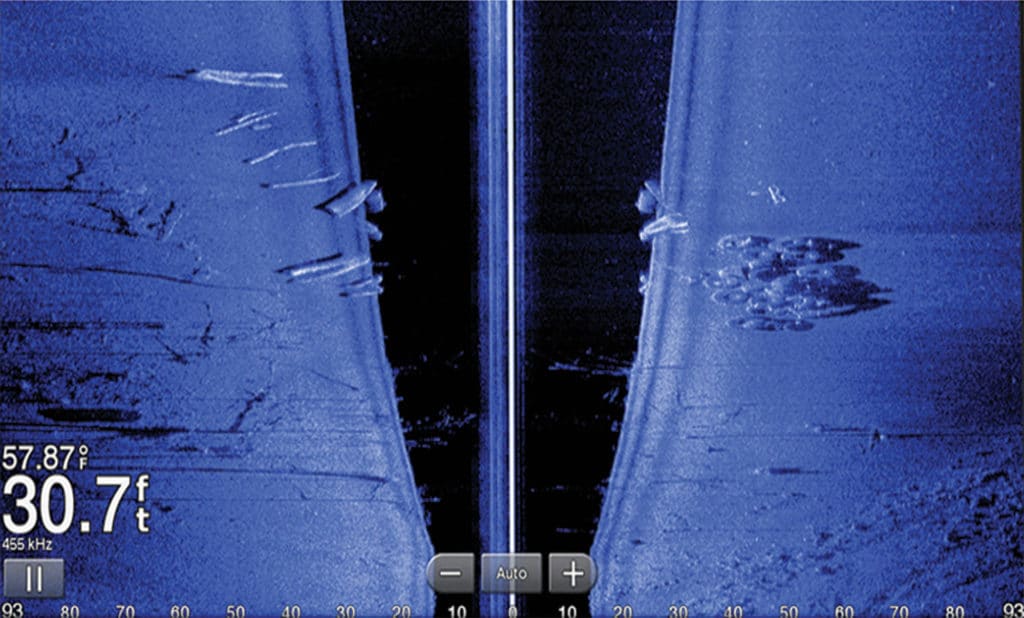
Side, Down or 3-D
Imaging-sonar transducers angled to both sides of the boat capture slices left and right. Those slices usually create arcs that measure 60 to 85 degrees, meaning the display will show returns starting near surface level and down to that angle. Most side-imaging sonar units can capture up to about 600 feet of water to each side of the boat. The farther out the signal carries, the weaker the signal.
Imaging-sonar transducers pointed down capture a slice of the water column that covers about 60 degrees. The maximum depth penetration usually averages about 600 feet, though Garmin’s CHIRP products advertise 750 feet, and Raymarine’s lower-frequency pulses can read to 900 feet while keeping the power level low to reduce noise, the company says.
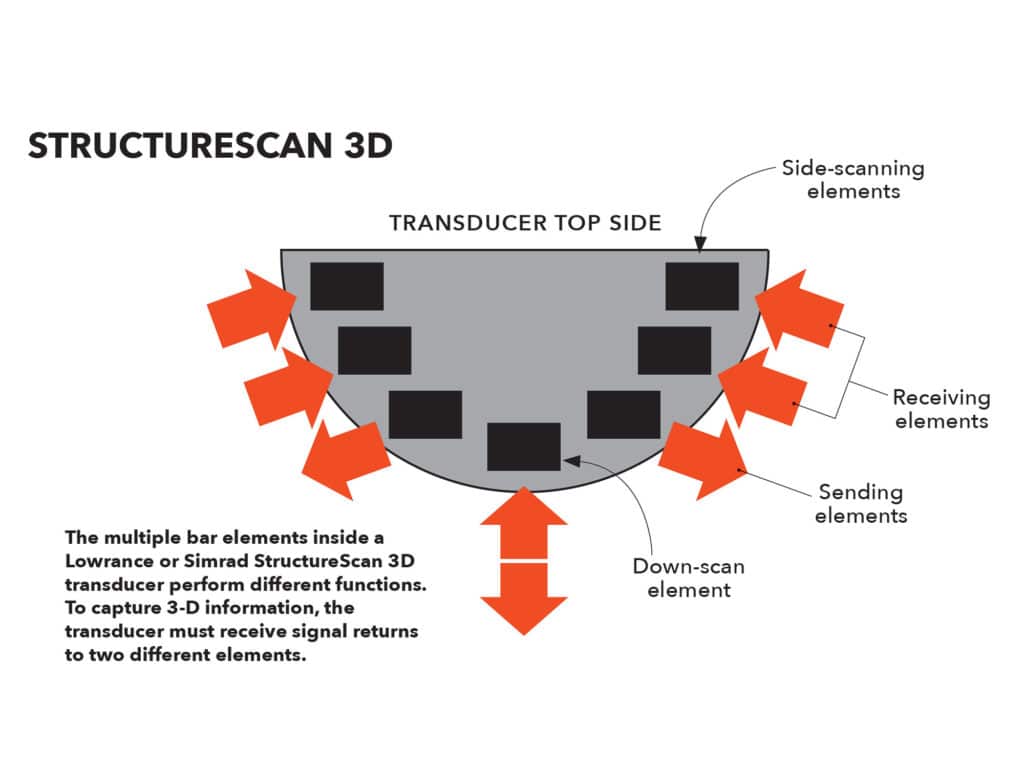
When side and down views combine, anglers can see photolike displays of everything from the surface to directly below the boat on both sides.
To take imaging sonar a step further, Lowrance and Simrad (brands under the Navico umbrella) recently introduced StructureScan 3D, joining Humminbird’s 360 Imaging, which debuted in 2012, in employing this technology all around the boat. Garmin’s Panoptix 3D (2015) generates views using multibeam sonar technology, much different from imaging sonar.
The 3-D products help anglers better decipher what imaging sonar shows. Historically, side-scan sonar has been tough for anglers to read. The 2-D display screen shows views to the side of the boat that include the water column and objects on or near the bottom. But because of a slightly skewed perspective, anglers must learn to interpret the shadows they see to understand the picture.
In addition, because imaging sonar cuts a slice of the water column, the boat must be moving (albeit slowly) to really paint a complete view. The beam does capture fish, but they’re not always recognizable unless they cast a shadow or linger in the beam.
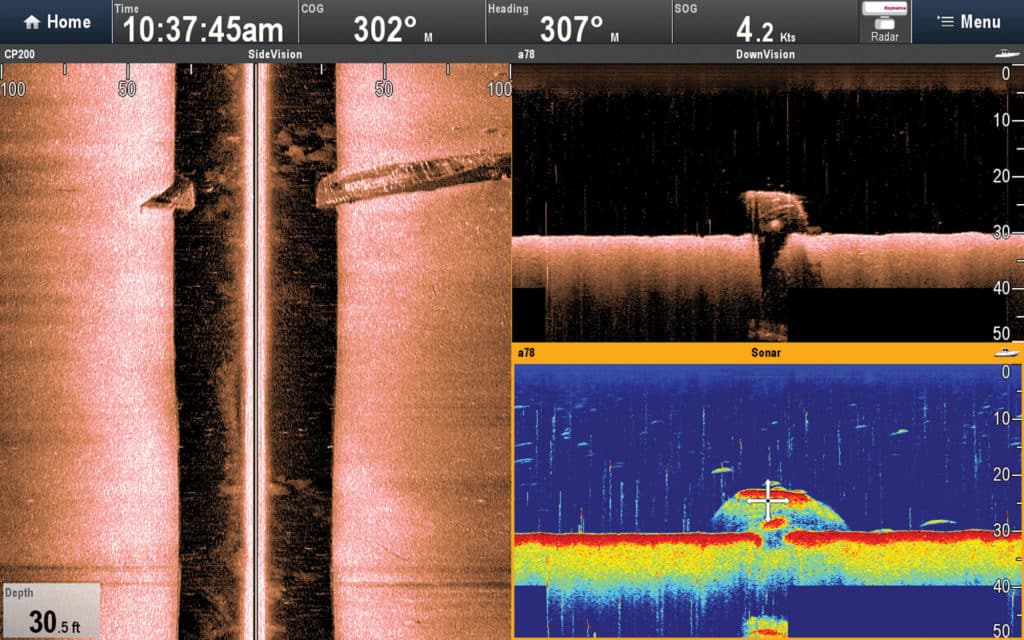
Monochrome View
“Most of the reason why we use tones or shades [of the same color palette] is because of the fine-resolution detail you get with imaging sonar,” says Lucas Steward, Lowrance product line director. “You can even tell gradients, such as where silt transitions to harder sand bottom.”
That monochrome palette and its slightly 3-D presentation (showing relief using shadow) for side and down views can also confuse anglers who are more familiar with bright colors distinguishing fish and structure. But those who frequently use the technology praise it highly once they really study what it can do. Motoring over familiar bottom structure helps anglers visualize the proper perspective.
Manufacturers also suggest using a split-screen view on a multifunction display to show down-scan views next to traditional sonar, or to show side- and down-scan views side by side. Once anglers acclimate to the presentation, imaging sonar shows startling detail, including fish and bait.
With StructureScan 3D, Lowrance and Simrad decided to introduce color because the technology clearly shows objects suspended off the bottom, such as fish. Fish can be identified and colored differently from the bottom. Processors have also become faster and more affordable, which makes 3-D imaging easier, Steward says.
Ten years from now, where will imaging sonar have taken us? I can only assume that the 3-D underwater view will be positively lifelike.


